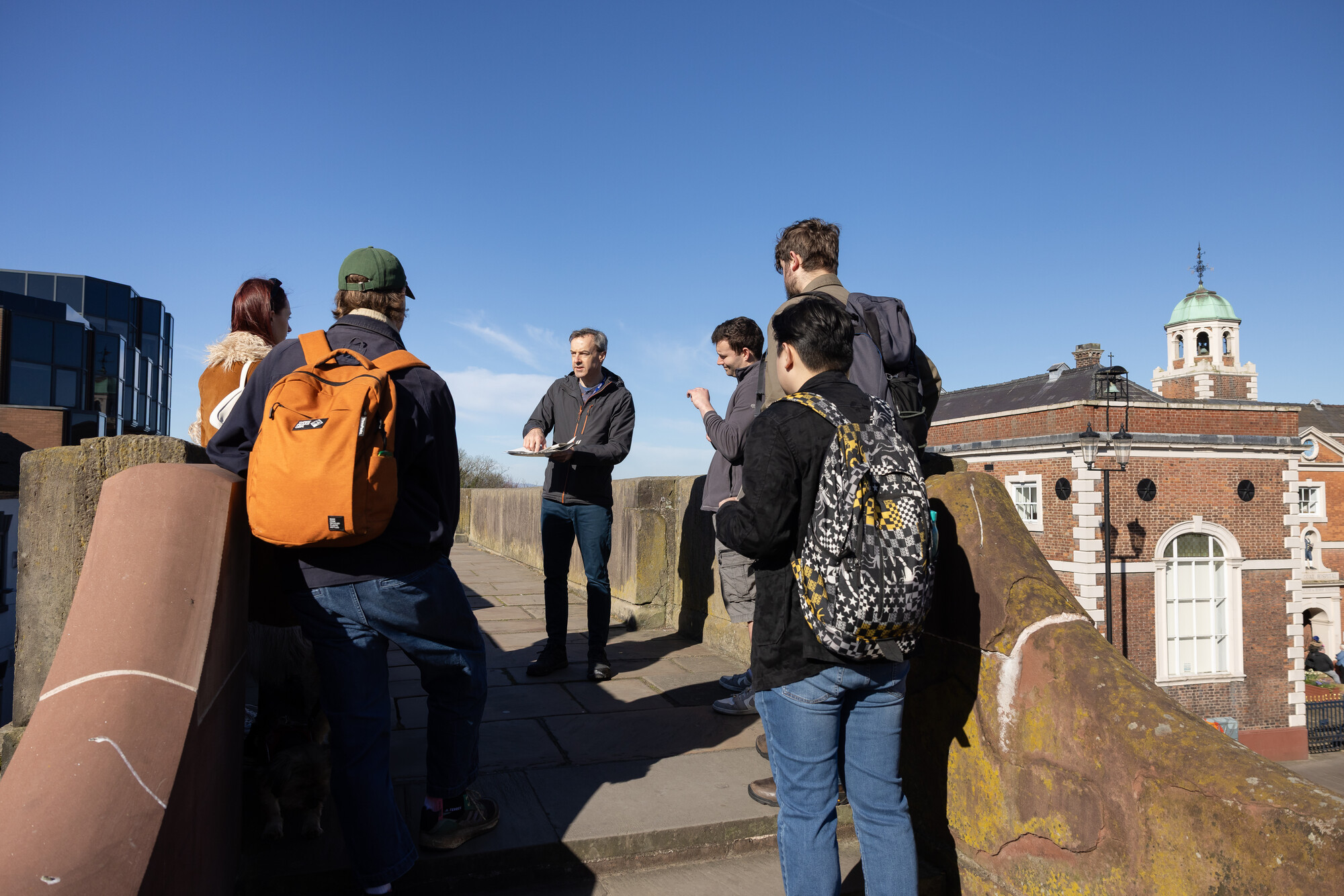Military Machinations – Our Lecturers Share the Lesser-known History of Chester
Dr Tom Pickles and Professor Tim Grady share their favourite historical hotspots in Chester, the Cheshire Military Museum and St John's Church, and discuss their significance in Chester and in our History degree.

We asked our History lecturers to highlight some of the lesser-known historical gems of Chester, a city absolutely brimming with historical significance. On top of the Medieval Chester Rows, the Roman Baths, and the Chester City Walls, you can visit our History lecturers' favourite historical spots at one of our Open Days or just for a day out.
Cheshire Military Museum

Chester is home to a whole host of heritage sites and museums, many of which feature in our taught modules. One of the favourites with our students has always been the Cheshire Military Museum. It is a great example of a regional regimental museum, and as such is packed to the rafters with artefacts, memorabilia and objects associated with the now disbanded Cheshire Regiment. The First World War gallery, complete with replica trench, has provided the dramatic backdrop to many a first-year seminar. But rest assured, you don't need to be interested in military history to enjoy the museum; there is something for everyone inside. The displays on the British army in India, for example, provoke much discussion about decolonisation, while the museum's small archive is packed with social history sources covering life on the home front as well as the battlefields.
St John's Church

St John's Church, standing on a commanding red sandstone bluff above the River Dee adjacent to the Roman amphitheatre, is now an imposing parish church.
But it was a wealthy and powerful religious community whose history offers an important case study for my second-year optional module on The Vikings: A Local-Global Diaspora and for my third-year optional module on The Norman Conquest, 1066-1154.
A medieval tradition recorded by the chronicles Gerald of Wales suggests St John's was founded in 689 by a king of the Mercians (based around Tamworth, Lichfield and Repton). Whatever the truth of this tradition, it has been argued that St John's was used by a group of Viking traders in Chester operating from a 'strand' on the river below, and that wonderful tenth-century wheel-headed crosses produced from its quarry at Redcliff and used at sites across Wirral commemorated these traders. During the tenth century, Edgar, one of the first kings of the English, met six or eight kings at Chester to assert his dominance over Britain; a 12th-century tradition suggests Edgar was rowed on the River Dee by these kings to St John's.
By the 11th century, the Bishop of Lichfield owned St John's and he moved his See to Chester with St John's as the episcopal church in 1075, but he moved it again to Coventry between 1087 and 1102. After this, the bishops and archdeacons of Lichfield/Coventry kept residences at St John's and it remained an important community and cult centre until it was dissolved in 1547 or 1548. But my favourite thing about St John's is the legend of its hermit, Harold. By the reign of King Henry II (1154–89) the people of Chester believed King Harold, who fought William the Conqueror and died at the battle of Hastings in 1066, had in fact survived, travelled to Saxony, returned as a hermit and was living at St John's in Chester in its chapel of St James. According to the Welsh Chronicle of the Princes, his uncorrupted body clad in leather hose, golden spurs, and a crown was discovered at St John's in 1332! A nice reconstruction can be seen from Prof. Katherine Wilson's UKRI AHRC funded project 'The Mobility of Objects Across Boundaries, 1000-1700' by Martin Moss of Dextra Visual.
Make sure to check out our History BA (Hons) course page to see how you can apply and learn more about historically significant movements and sites from Tim and Tom, along with how you can explore your own historical passions.